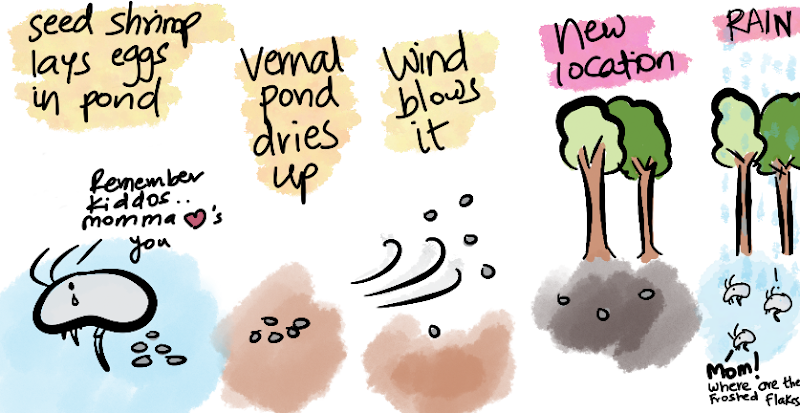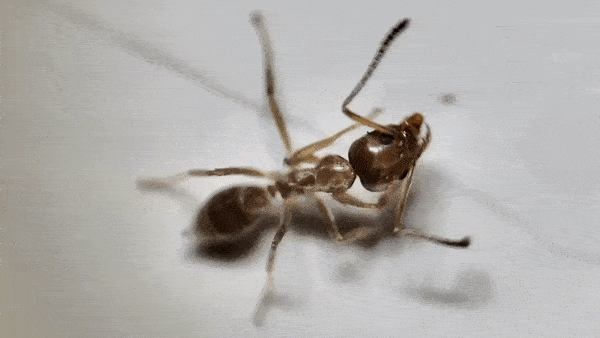On my last hike to Rancho San Antonio Preserve, I found a puddle in the middle of the trail with strange creatures moving and then I thought to myself, do these things think they are above the law that they are socializing with each other in these dire times?
Here is what I saw.
Turns out these are Seed shrimps or Ostracods, which are crustaceans that look like a shrimp locked inside a seed.
But then how did they end up here, since ostracods are usually found in lakes and other freshwater environments which are not close to this puddle.
You see, Ostracods can lay desiccation-resistant eggs that can survive dry state and emerge several years later only when they come in contact with water.
During that time, winds can blow these eggs to far away places and they can be deposited to places like the middle of this trail.
You see, Ostracods can lay desiccation-resistant eggs that can survive dry state and emerge several years later only when they come in contact with water.
During that time, winds can blow these eggs to far away places and they can be deposited to places like the middle of this trail.
Then when rain arrives or a clumsy hiker spills their water bottle they come to life.
Because seed shrimps protect themselves from predators by enclosing all the soft body parts inside the calcite shell which also helps to fossilize them for future paleontologists.
Below is a seed shrimp throwing a tantrum when I tell it that it needs to wear a mask and stay at least 6 feet away from its friends.
But you might be surprised when you find out the earliest documented case of human-mediated bird introduction in the Western Hemisphere happened even before the Spanish arrival.
You see, Ahuitzotl who was an Aztec ruler from 1486-1502 gave orders that Great-tailed Grackles be brought to present day Mexico city from the Gulf Coast region.
Birds being birds, they flew away and started exploring other areas.
Great-tailed Grackles are commonly confused with crows, but they are in the same family as blackbirds.
Below is a male Great-tailed Grackle snobbishly showing off its great tail.
Ok, let's assume it is January 2020, now what do you do? Obvious answer, you pick your nose.
Right, dried mucus in your nose might affect your ability to smell that piping hot pizza, so you stick it, pick it and then flick it.
Similarly, ants get annoyed when their sense of smell gets compromised since it impedes their ability to follow scent trails or detect food nearby.
So they will groom their antennae constantly if they get dirt on them.
In the case of this Argentine ant, you can see it using its front leg to get a little saliva to help with cleaning its antenna just how some men would lick their hands and groom their hair.
Spiders will have to constantly pump hemolymph which causes the legs to stretch outward.
Below is a mesh web weaver spider showing the hemolymph(observe the tiny air bubbles) being pumped to its legs to keep it stretched.








No comments:
Post a Comment
Did you learn something new in this post? Let us know in the comments below